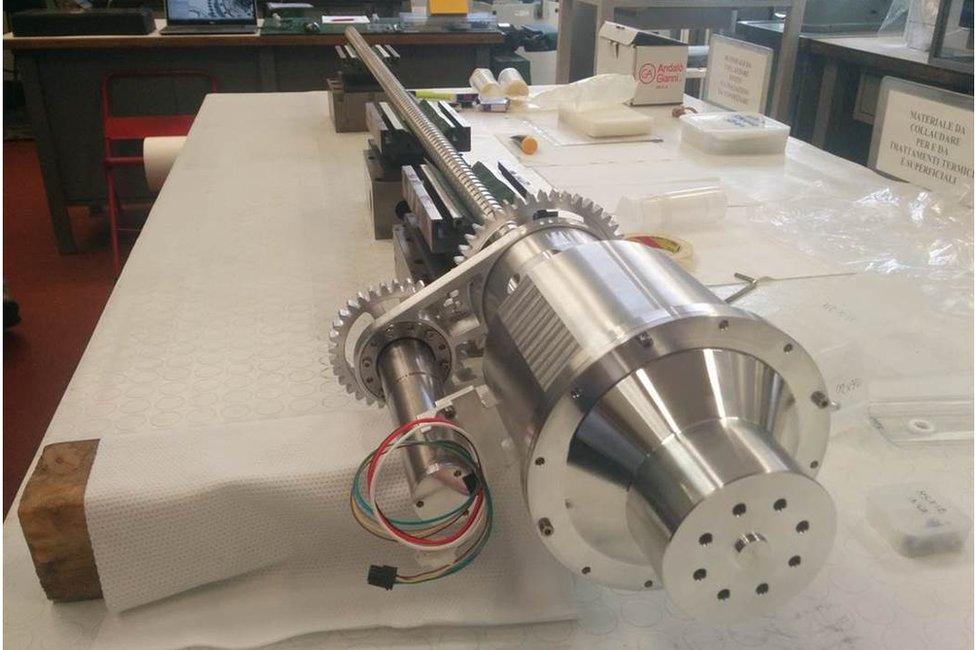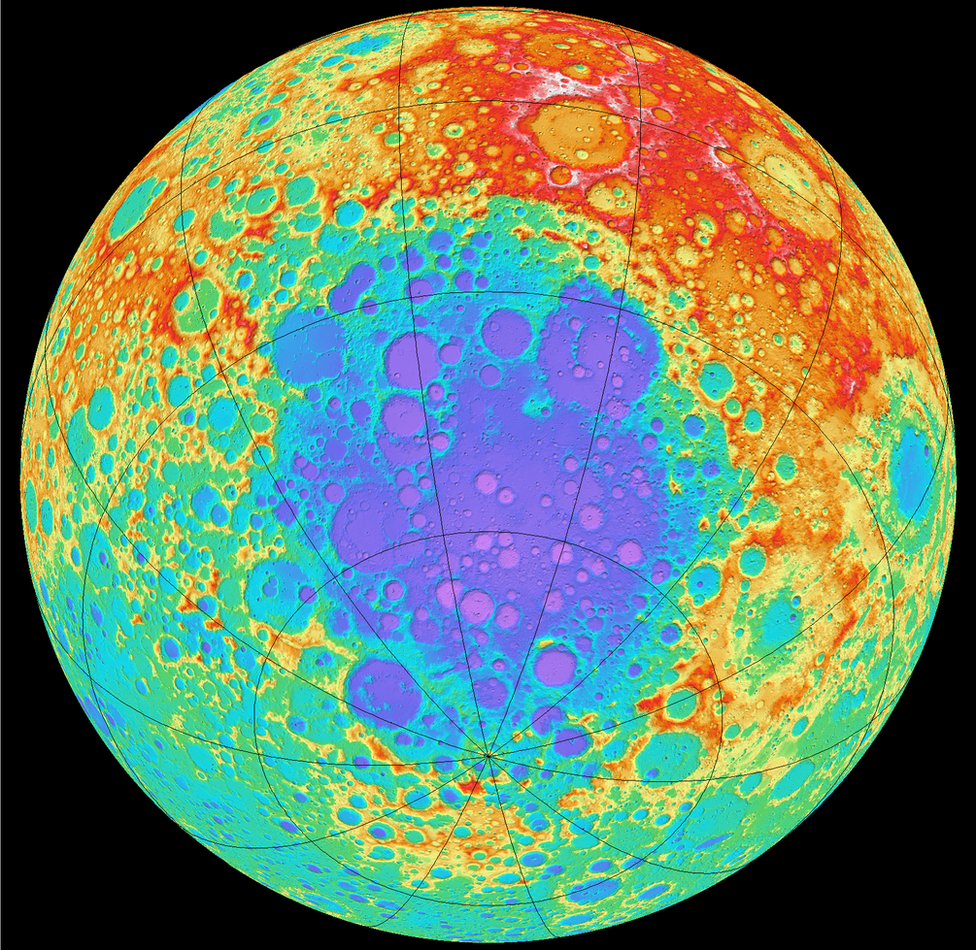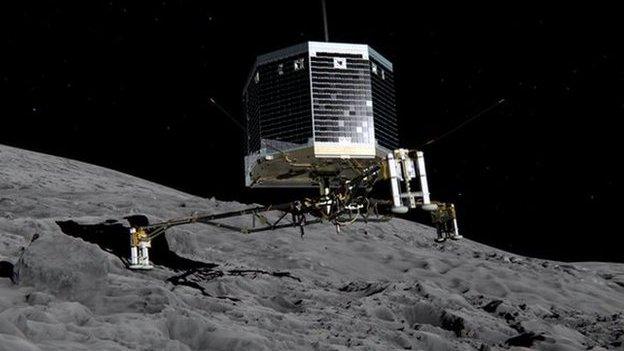Europe backs lunar drilling technology
- Published

The drill aims to be able to go more than a metre below the lunar surface
The European Space Agency has signed a contract to build a prototype drill and chemistry lab that will be flown on a Russian mission to the Moon in 2021.
Known as Prospect, the instrument package will be a key contribution to Moscow's Luna-Resurs venture.
The equipment will pull up sub-surface material and analyse it for the presence of water and other substances.
The €8m (£6m) deal was signed at the Farnborough Air Show.
The contract to build the package has been signed with Italian aerospace giant Leonardo-Finmeccanica.
To take Prospect to full implementation will require European ministers to agree a further €65m at their end-of-year gathering in Lausanne, Switzerland.
That money will however also include the funds for the autonomous navigation system, called Pilot, which will be used to land the probe.
"Luna-Resurs is fully planned in the Russian space programme, and they are pushing us to finalise all the agreements to go forward with the project," explained David Parker, Esa's director for human spaceflight and robotic exploration.
"We have got the money to start work but we will need further support come the ministerial. We're at now what we call 'Phase B plus', and the approval we will seek at the end of the year should enable us to finish the job."

South Pole Aitken Basin (blue/purple) is about 2,500km in diameter
The touchdown location has not yet been agreed but many scientists would like it to be in South Pole Aitken Basin, a huge impact crater on the far side of the Moon.
A primary mission goal is to see what resources may be in place to support future manned exploration. Finding water obviously is a big objective - but there will be other volatiles and minerals that could be exploited, says Esa's lead engineer on the project, Richard Fisackerly.
"The lunar poles could in effect be an oasis in our exploration journey," he told the Farnborough show.
"Recent orbital missions and also impactors have given us fresh insight into the potential for water and other volatiles in the polar regions, which could be used to support future explorers with water and oxygen for life support, for energy management and also potentially for propellant.
"We now need to get down to the surface with Prospect, to start effectively to get our hands dirty, to try to understand the nature, abundance and distribution of these volatiles."

David Parker and Norman Bone sign the Prospect contract
The Prospect hardware draws on the heritage of previous Esa missions.
Its drill shares many features with the tools developed for the Philae robot to dig into Comet 67P and for the 2020 ExoMars rover to get under the dusty surface of the Red Planet.
"[The new Prospect drill] is truly cutting edge technology," said Norman Bone from the Italian aerospace giant Leonardo-Finmeccanica.
"Prospect will work at more than a metre deep and in extreme conditions - at 170 degrees below zero (Celsius)."

Artwork: The Philae robot was dropped on to Comet 67P to investigate its chemistry
Its chemistry lab is a descendent of the Ptolemy mass spectrometer flown on Philae. That was produced by the UK's Open University and the British institution will reprise its role for the new miniaturised analysis box.
"We expect possibly to find some surface water-ice, like a frost. But there are mechanisms that suggest this is more concentrated the deeper you go. We don't know really, and that's the difficulty in designing such a mission," the OU's Simeon Barber told the BBC.
"We'd like to know how much water there is, what its distribution at depth is as we drill down, and whether this all changes with time. It could be that across the day-night cycle, as the Sun comes up, the surface warms very slightly and the water sort of hops to the next cold spot."
Esa had originally planned to send its own lunar lander mission in 2018, but ministers at one of their previous big meetings refused to sanction the expected €500m cost.
The Prospect and Pilot technologies that were part developed for that venture have essentially been resurrected for Luna-Resurs.
Jonathan.Amos-INTERNET@bbc.co.uk, external and follow me on Twitter: @BBCAmos, external
- Published17 October 2015
